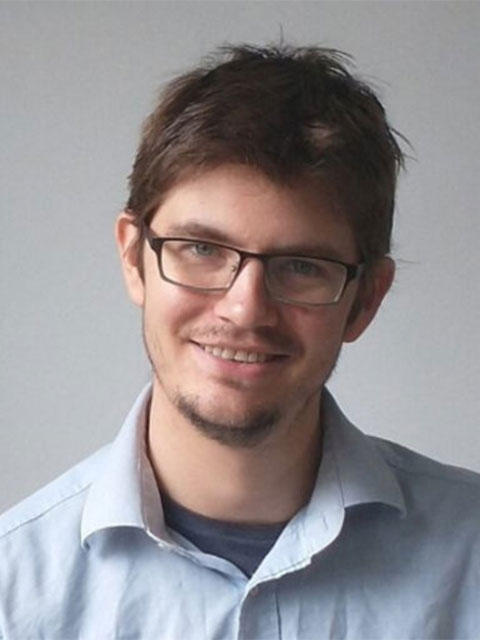Background:
The research in my PhD was into the use of high fidelity turbulence modelling to simulate the flow fields resulting from the cooling of cut back trailing edges. For this project, I worked with Rolls-Royce and was supervised by Prof. Paul Tucker at the University of Cambridge. After completing my PhD in 2013, I continued to work with Paul as a research associate, working on several turbomachinery projects, including convoluted intake ducts, fan modelling for ultra high bypass engines, and, more generally, developing numerical methods.
While at Cambridge, I joined Rolls-Royce as a Knowledge Transfer Fellow, helping to bring some of the outputs from my research in house to extend the capabilities of their CFD solver, Hydra. I also joined Murray Edwards College as a Bye Fellow, and was Director of Studies for their undergraduate engineers.
In 2018, I moved to Northern Ireland to take up a lectureship at Queen’s University, Belfast, where I was able to take my research and apply it to a wider range of problems, including areas such as energy storage and renewable energy generation. I moved back to England in 2021, and joined Loughborough, where I hope to be able to continue to apply my research in advanced numerical methods to problems in the aerospace and automotive sectors, as well as to green technology such as flow batteries and wind and wave power generation.
Qualifications:
- 2018-2021: Queen’s University, Belfast
- Postgraduate Certificate in Higher Education Teaching
- 2009-2013: University of Cambridge (Peterhouse)
- PhD in Aerospace Engineering (Supervisor: Prof. Paul Tucker)
- 2005-2009: University of Cambridge (Peterhouse)
- MEng in Engineering (Aerospace)
Outline of main research interests:
The computational modelling of flows can be a powerful tool for meeting the most pressing global challenges and development goals. There are significant benefits to increasing the proportion of design that is done computationally – both in improving the performance, and in meeting the ever-shortening time scales for producing new designs. To achieve this, the simulations must become truly predictive: they must provide confidence that the answers they give are realistic.
Beyond the continuing growth in computing power, there are two key drivers of predictive simulations. The first is improvement in underlying numerical schemes, such as more robust high order methods – particularly those which are well suited to modern computational hardware. The second is improved blending of modelling approaches – using less expensive models where these are known to work well and restricting the use of more generally accurate approaches to where they are necessary. This blending includes both turbulence modelling – hybrid RANS/LES being a key example – and fidelity of geometrical representation, such as the use of immersed boundaries or smeared geometries for cheaply producing appropriate flow fields.
My research interests include both of these areas, and also involve applying the resulting numerical methods to help solve real world engineering and development problems, particularly those in the sectors of energy storage and power generation.
Grants and contracts:
2021 – 2024 ÆSIR
- Development of high TRL prototype modular flow battery for demand side energy storage.
- (Invest NI / CASE)
2016 – 2017
- Improving the design of internal blade cooling systems by leveraging HPC.
- (STFC / Rolls-Royce, plc.)
2014 – 2015 Impact Acceleration Account Knowledge Transfer Partnership
- Bringing high performance numerical methods in house to Rolls-Royce.
- (EPSRC / Rolls-Royce, plc.)
Current teaching responsibilities:
- 21TTD003: Automotive Group Project
Current administrative responsibilities:
- Admissions Tutor
Application of an Immersed Boundary Method on an Instrumented Turbine Blade With Large Eddy Simulation
- Ubald, BN, Watson, R, Cui, J, Tucker, P, Shahpar, S
- ASME Journal of Turbomachinery (June 2021)
Turbomachinery Simulation Challenges and the Future
- Tyacke, J, Vadlamani, NR, Trojak, W, Watson, R, Ma, Y, Tucker, PG
- Progress in Aerospace Sciences (October 2019)
A Simple Flux Reconstruction Approach to Solving a Poisson Equation to Find Wall Distances for Turbulence Modelling
- Watson, R, Trojak, W, Tucker, PG
- AIAA Aviation Forum (June 2018)
Towards Robust Unstructured Turbomachinery Large Eddy Simulation
- Watson, R, Tucker, PG, Wang, Z-N, Yuan, X
- Computers and Fluids (September 2015)
Large Eddy Simulation for Turbines: Methodologies, Cost and Future Outlooks
- Tyacke, J, Tucker, P, Jefferson-Loveday, R, Rao Vadlamani, N, Watson, R, Naqavi, I, Yang, X
- ASME Journal of Turbomachinery (June 2014)
External collaborators:
- Rolls-Royce, plc.
- University of Cambridge
- Shell, plc.
- Texas A&M University
- HORIBA-MIRA, ltd.
- Imperial College, London
- Queen’s University, Belfast
